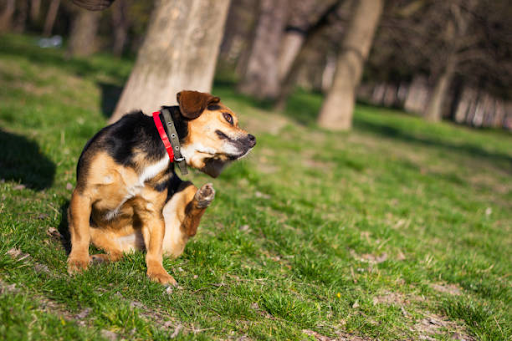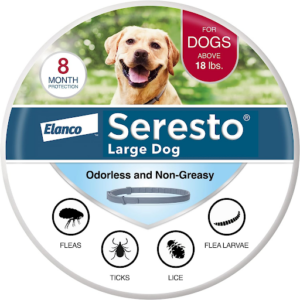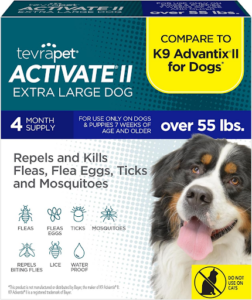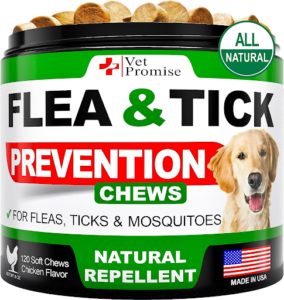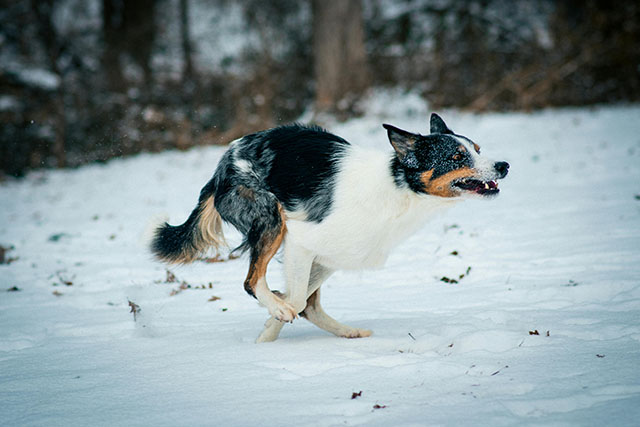Do you shudder when you think about fleas? Argh! Keeping your home, pets, and lives free of the infamous pest can seem impossible. And nobody wants fleas on their beloved dog. They’re pesky, difficult to get rid of, and can be incredibly irritating to your pup. But don’t worry — flea-free living is achievable with the right information and strategies.
If you want to learn how to prevent fleas from taking over your dog’s life (and yours!), then this blog post is for you! In this post, we’ll go through simple steps that will help keep those nasty little critters away from Fido. We’ll also cover what treatments are effective for getting rid of stubborn flea infestations quickly and safely.
So, if you’re ready to (finally!) put an end to all your flea worries, let’s dive into the world of itch-free doggy living together!
What Kills Fleas on Dogs?
Before we dive into the methods of exterminating fleas, let’s understand what makes these bloodsucking buggers tick. Fleas are wingless insects that feed on the blood of mammals, including our beloved dogs. For further information on fleas, watch this video shared by an expert.
Killing them isn’t always straightforward, but here are some effective methods to get rid of fleas on your furry companion:
Flea Shampoos
These shampoos are specially formulated to instantly eliminate fleas and their eggs upon contact. It is essential to use a shampoo specifically for dogs and follow the instructions diligently. Remember that you may need to bathe your pet multiple times, as the shampoo’s effectiveness may diminish after a few days.
Consider trying Adams Plus Flea & Tick Shampoo with Precor – a highly effective treatment that kills adult fleas, flea eggs, ticks, and lice; suitable for cats, kittens, dogs, and puppies over 12 weeks old, even those with sensitive skin.
Flea Collars
Flea collars provide a convenient and continuous option for protecting your pet. These collars release chemicals that effectively repel and eliminate fleas, primarily targeting the neck area. It is important to choose a safe and appropriate collar for your dog’s breed and size.
For dogs over 18 lbs, the Seresto Large Dog Vet-Recommended Flea & Tick Treatment & Prevention Collar offers 8 months of reliable protection.
Topical Flea Treatments
Topical flea treatments, such as spot-on solutions, are directly applied to your dog’s skin, typically between the shoulder blades. These treatments disperse throughout your pet’s body, effectively eliminating fleas upon contact. They are highly popular due to their long-lasting effects.
You should try Activate II Flea and Tick Prevention for Dogs, available in a 4-count pack for extra large dogs weighing 55+ lbs. These topical drops provide 4 months of reliable flea treatment. Activate II is vet-approved to repel and eliminate fleas and ticks upon contact, safeguarding your canine from bites and potential flea-borne illnesses.
Oral Medications
Oral flea medications are available in the form of tablets or chews. These medications disrupt the life cycle of fleas by inhibiting their reproductive ability. It is important to consult your veterinarian to determine the most suitable oral medication for your dog, as there are variations in duration and effectiveness.
Try Flea and Tick Prevention for Dogs Chewables! It is a natural supplement suitable for dogs of all breeds and ages. Manufactured in the USA, each bottle contains 120 tablets. Giving your dog these chewable tablets daily will ensure optimal results, as it helps maintain appropriate levels of protection in their system.
Flea Combs
A flea comb is a simple yet effective tool for physically eliminating fleas from your dog’s fur. While it cannot prevent future infestations, it provides immediate relief and allows for monitoring the situation.
For instance, the CONAIRPROPET Pet brush for Flea and Tick Removal is an ideal at-home grooming tool. This 1/2″ Stainless Steel Comb with a Memory Grip Handle efficiently removes flea debris and is suitable for pets with short and long coats prone to snags and knots.
Prescription Medications
If your dog’s flea problem is severe, your veterinarian may prescribe stronger medications to eliminate the infestation. Always follow your vet’s recommendations and instructions closely.
What Are the Benefits of Flea Prevention?
Prevention is better than cure, and this adage holds regarding fleas. Here are some compelling reasons to make flea prevention a part of your pet care routine:
- Protect Your Pet’s Health: Fleas can transmit diseases to your dog, such as tapeworms and Bartonella. By preventing flea infestations, you’re keeping your furry friend healthier and happier.
- Prevent Allergies: Many dogs are allergic to flea saliva, leading to intense itching, hair loss, and skin infections. By preventing fleas, you’re sparing your pet from the misery of flea allergies.
- Maintain Peace at Home: Fleas aren’t picky; they’ll happily make themselves home in your carpets, bedding, and furniture. Preventing fleas on your pet means protecting your home from infestations.
- Save on Vet Bills: Treating a flea infestation can be costly, especially if it leads to secondary health issues. By investing in prevention, you’re likely to save money in the long run.
What Is the Best Flea Treatment and Prevention?
Now, let’s explore the best methods for flea treatment and prevention based on your pet’s specific needs:
- Consult Your Vet: Always start with a visit to your veterinarian. They can recommend the most suitable flea prevention products for your dog, considering their age, size, and health.
- Regular Grooming: Brushing your dog regularly can help you spot fleas and their eggs early. Plus, it’s a great bonding experience with your pet.
- Clean Your Home: Regularly vacuum and wash your pet’s bedding, toys, and other areas where they spend time. This reduces the chances of flea eggs hatching and infesting your home.
- Flea-Proof Your Yard: Keep your yard well-maintained to discourage fleas. Trim tall grass, remove debris, and consider using nematodes, natural predators of fleas, to control the population.
- Choose High-Quality Products: Opt for well-known and trusted brands when selecting flea prevention products. Read reviews and ask your vet for recommendations.
- Stay Consistent: Consistency is key, whether monthly topical treatment or regular grooming. Skipping doses or treatments can leave your pet vulnerable to infestations.
How Do You Treat Fleas Naturally?
If you prefer a more natural approach to flea treatment, there are some options to consider:
- Flea-Repelling Plants: Some plants, like lavender, rosemary, and mint, have natural flea-repelling properties. Plant them in your garden or use their essential oils to create homemade repellent sprays.
- Diatomaceous Earth: Food-grade diatomaceous earth is a fine powder that can be sprinkled around your home and on your pet’s bedding. It works by dehydrating fleas and other pests. Be sure to choose the food-grade version and use it cautiously, as it can irritate the lungs when inhaled.
- Apple Cider Vinegar: A diluted apple cider vinegar solution can be used as a flea-repelling spray. Be cautious with sensitive-skinned dogs, as it may irritate them.
- Homemade Flea Collars: Create a natural flea collar by applying a few drops of essential oils like lavender or eucalyptus to your dog’s regular collar. Be sure to consult your vet before using essential oils on your pet.
- Bathing with Dawn Dish Soap: A bath with Dawn dish soap can help kill and remove fleas from your dog. It’s a simple and gentle home remedy.
- Flea-Repelling Diet: Some believe adding garlic or brewer’s yeast to your dog’s diet can help repel fleas. However, consult your vet before making any dietary changes.
A Flea-Free Future for Your Furry Friend
Prevention is your most potent weapon in the quest for a flea-free home and a happy, healthy pet. By using the right combination of treatments and natural remedies, you can create a fortress against fleas. Remember, your vet is your best source of guidance, so consult them for a personalized approach to keeping your dog flea-free. Your furry friend will thank you with endless tail wags and slobbery kisses!
Jessica is a veterinary medicine student who is passionate about animals. Living with her cherished dog, Milo, deepens her understanding of the human-animal connection, enhancing her empathy as a future veterinarian.
Jessica’s concise articles reflect her dedication to improving the lives of animals and those who care for them, making her an inspiring figure in the pet care field.

